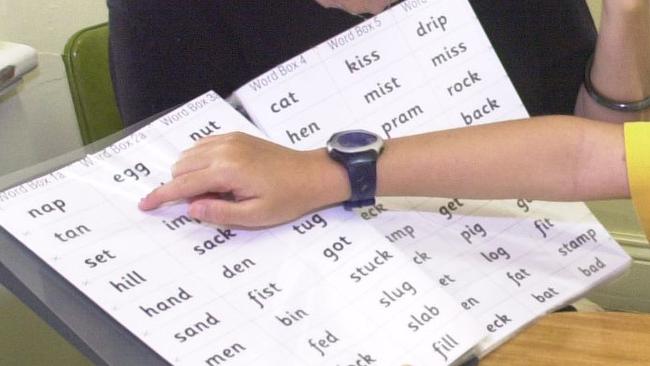Teachers look at phonics anew after training
Attitudes towards the role of phonics in teaching reading is shifting in NSW.

Attitudes towards the role of phonics in teaching reading is shifting in NSW, with almost two-thirds of teachers who received evidence-based literacy training subsequently committing to changing their methods.
Evaluation of a statewide training blitz has revealed a significant lift in teachers’ awareness of the importance of explicit and systematic teaching for developing children’s phonics skills — an essential component of learning to read — as well as confidence in their abilities to teach effectively.
The study, however, also confirmed that many ideas stemming from the whole-language philosophy of reading instruction persist throughout the profession, with a quarter of teachers expressing a view that English cannot be taught effectively using phonics.
NSW this week became the second state after South Australia to introduce compulsory phonics screening for Year 1 students, and will also ensure phonics becomes a key component of early reading instruction from next year.
The move follows a push by the state’s Education Department to promote more effective reading instruction, specifically the use of synthetic phonics. Evidence has shown the method, which involves teaching students to pronounce the sounds associated with letters in isolation, and combine these sounds to form words, to be the most effective way of teaching children to read.
Two-day courses in effective reading instruction, with a focus on synthetic phonics, were held in 2018, with 2288 staff from 1089 NSW public primary schools attending. Participants were surveyed before and after the course and again nine months later.
Prior to the course, 54 per cent of teachers agreed that effective phonics instruction involved teaching speech sounds and the corresponding letters in isolation. That rose to 76 per cent after the course.
Those who understood reading to be the “mechanical skill of decoding”, or translating printed symbols into sounds, jumped from 44 per cent before the course to 62 per cent after the course.
Following the course, 63 per cent of participants said they would change their teaching to include a greater focus on phonics, while 70 per cent said they planned to switch to using decodable texts in the classrooms.
However, the surveys also showed that the training did not substantially alter the views of participants who believed that meaning cues, rather than phonics knowledge, should be emphasised during children’s early experiences with reading.
The proportion of teachers who expressed the view that the English language was “too unpredictable for phonics to work well” was unchanged nine months after training, at 26 per cent.
According to the final evaluation report into the program, “the concepts underlying these beliefs appear to be based on a whole-language approach to teaching”.
“The whole-language approach (which introduces students to language through context) was used as the main model for teaching reading in Australia for several decades,” the report says.
“From a psychological perspective, once beliefs have been formed, they can be very resistant to change. Specifically, research shows that initially-held beliefs often persevere even in the face of evidence that contradicts them.”
The report recommended that “more intensive work” be carried out to change some “deeply entrenched” beliefs linked to whole-language instruction.
Jennifer Buckingham, a research and strategy director at literacy instruction provider MultiLit, said educating teachers would be an ongoing process. “The complexity of the English writing system makes it even more important to teach phonics systematically,” Dr Buckingham said.


